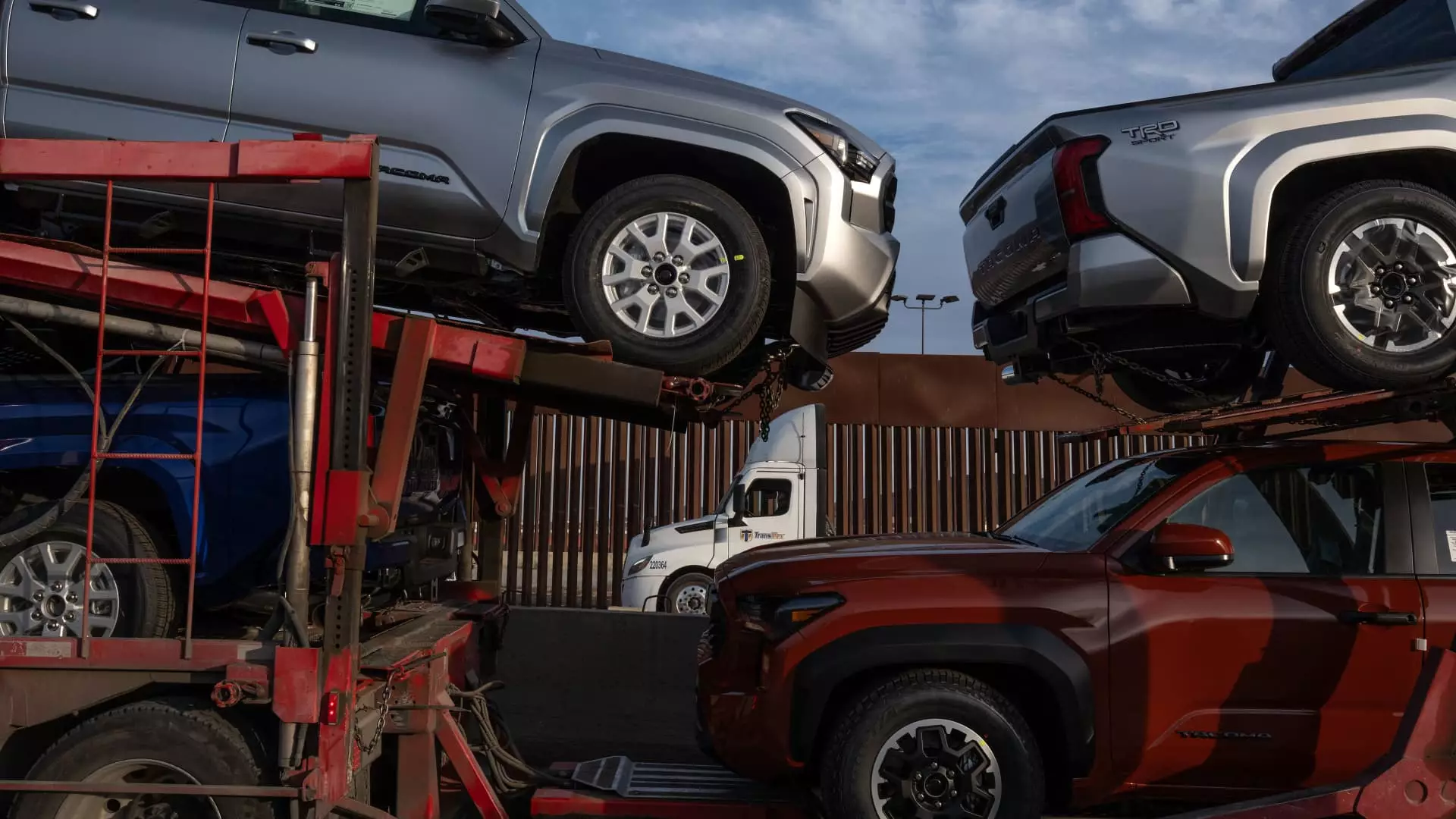As the specter of a 25% tariff on imports from key trading partners like Canada and Mexico swings like a pendulum over the North American automotive industry, tensions are palpable. Automakers across the continent are on heightened alert, juggling their manufacturing strategies and corporate planning in an environment marked by volatility and uncertainty. This ongoing saga, born from President Trump’s initial promises and escalating trade references, poses significant implications not only for automotive giants like General Motors and Ford but also for consumers and the broader economy.
Tariffs are essentially taxes levied on imported goods, aimed at making foreign products less financially appealing compared to domestically produced alternatives. However, the ramifications of such tariffs extend beyond government coffers. Automakers are grappling with the concern that any increase in import costs would inevitably trickle down to consumers, driving up vehicle prices and curtailing demand. Analysts forecast a cloud of uncertainty that looms large, sparking a measured response from industry leaders who are keenly aware of the market’s vulnerabilities.
The market’s reaction to this uncertainty was starkly visible when General Motors experienced one of its steepest stock downturns in years, despite posting positive earnings. This paradox signifies the market’s sensitivity to geopolitical shifts and domestic policies. Analysts, acknowledging the underlying opportunities within GM’s business model, pushed for cautious optimism. Nonetheless, the overwhelming presence of noise—ranging from political events to environmental disasters—has stymied any bullish sentiment among investors. Such fluctuating conditions instill a sense of urgency in stakeholders who are desperate for clarity amidst the chaos.
To understand the potential impact of tariffs, one must consider the intricate web of the global automotive supply chain. Most major manufacturers have established deep-rooted operations throughout North America, with a significant reliance on imported parts from Mexico and Canada. Statistics indicate that a staggering 49.4% of all auto parts utilized in U.S. production originate from Mexico, while around 86.9% of Mexico’s auto parts production is exported to the U.S. Such interdependency nullifies the effectiveness of simplistic tariff strategies, as it could choke off the lifeblood of production lines reliant on these imports.
Wells Fargo has provided sobering estimates regarding the financial strain tariffs could impose on traditional automakers. Predictions suggest that GM, Ford, and Stellantis could face losses that could accumulate to billions of dollars annually. Contemplating a 25% tariff introduces the possibility of adding significant costs—up to $6,250 to the price of a standard vehicle costing $25,000—from Canada or Mexico. This, in turn, could compel manufacturers to shift these costs onto consumers, a move likely to dampen sales in an already competitive market.
In anticipation of these challenges, companies are not sitting idly by. Stakeholders have initiated contingency planning, seeking to devise strategies that might mitigate the impacts of potential tariffs. Notably, Stellantis has communicated its awareness of the potential repercussions and is formulating various scenarios in response. This proactive stance illustrates the agile mindset necessary for manufacturers to navigate unforeseen economic headwinds. Conversely, complacency could prove detrimental as policymakers finalize their positions.
Amidst the backdrop of uncertainty, not all automakers exhibit equal vulnerability to these tariffs. A recent report highlighted that Volkswagen is poised to face the most substantial exposure, with 43% of its U.S. sales tied directly to production in Mexico. Other manufacturers, like Nissan and Stellantis, also hold significant stakes in this precarious balance, underscoring the intricate complexities that characterize inter-country auto production.
With impending decisions looming from the Trump administration, the automotive industry is gripped by anxiety over what the future holds. As manufacturers strategize their next moves, they must weigh the interconnected realities of global trade against their domestic aspirations. It is evident that clarity is needed—both from policymakers and market conditions—if the automobile sector is to flourish in this ever-evolving landscape. The decisions made in the coming days and months will play a pivotal role in charting the future trajectory for an industry already under pressure. The journey ahead, fuelled by uncertainty, will undoubtedly reshape how automakers and consumers alike engage in this vital economic domain.


Leave a Reply